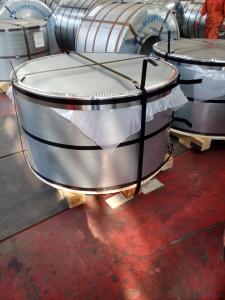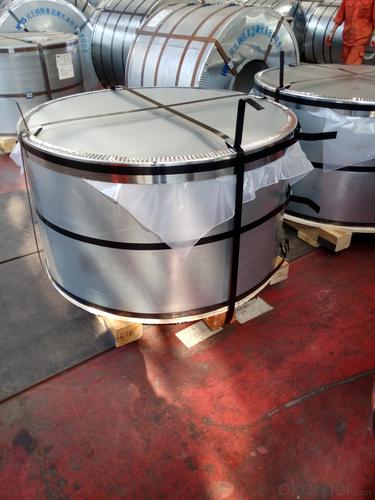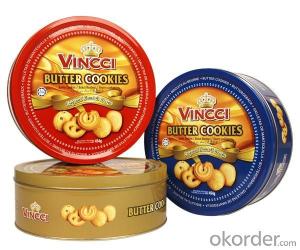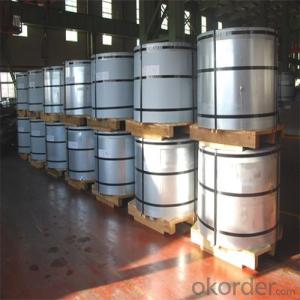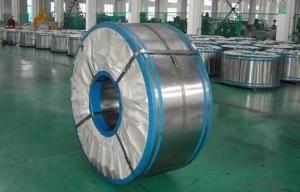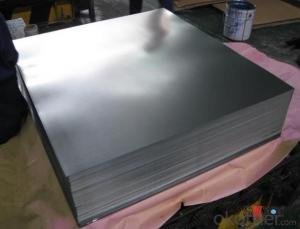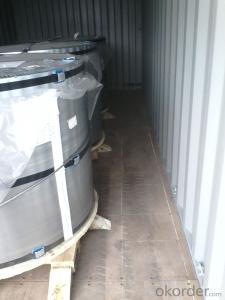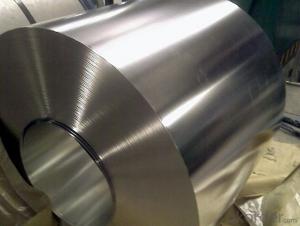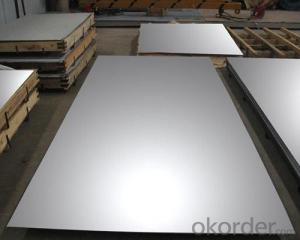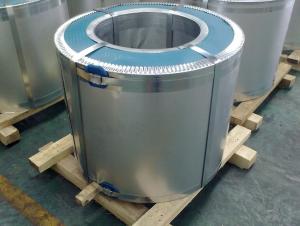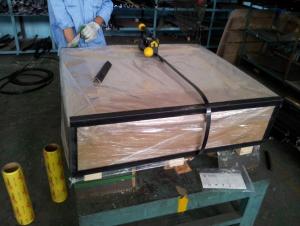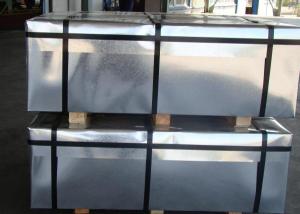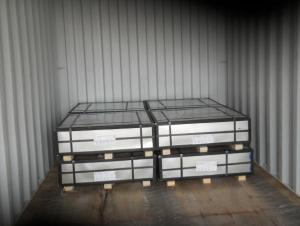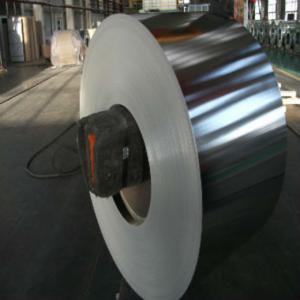Electrolytic Tinplate Sheets for Useage of Paint Package
- Loading Port:
- Tianjin
- Payment Terms:
- TT OR LC
- Min Order Qty:
- 50 m.t.
- Supply Capability:
- 30000 m.t./month
OKorder Service Pledge
OKorder Financial Service
You Might Also Like
Specification
1.Structure of Electrolytic Tinplate Sheets for Useage of Paint Package Description
Electrolytic Tinplate undoubtedly enjoys the pride of place as a packaging medium especially for food. It owes its unique position to its "nine layer sandwich structure", each of which contributes to its eminence as a packing material. The steel base of electrolytic tinplate provides the necessary strength and
formability for can fabrication. The tin-iron alloy layer provides the bond between the steel and free tin layer. The free tin layer is not only responsible for the attractive bright finish and ease of solderability but is also non-toxic- a factor of vital importance in food packaging!
2.Main Features of the Electrolytic Tinplate Sheets for Useage of Paint Package
Appearance – Tinplate is characterized by its beautiful metallic luster. Products with various kinds of surface roughness are produced by selecting
the surface finish of the substrate steel sheet.
Paintability and printability – Tinplates have excellent paintability and printability. Printing is beautifully finished using various lacquers and inks.
Formability and strength – Tinplates have got very good formability and strength. By selecting a proper temper grade, appropriate formability is
obtained for different applications as well as the required strength after forming.
Corrosion resistance – Tinplate has got good corrosion resistance. By selecting a proper coating weight, appropriate corrosion resistance is
obtained against container contents. Coated items should meet 24 hour 5 % salt spray requirement.
Solderability and weldability – Tinplates can be joined both by soldering or welding. These properties of tinplate are used for making various types
of cans.
Hygienic – Tin coating provides good and non toxic barrier properties to protect food products from impurities, bacteria, moisture, light and
odours.
Safe – Tinplate being low weight and high strength makes food cans easy to ship and transport.
Eco friendly – Tinplate offers 100 % recyclability.
Tin is not good for low temperature applications since it changes structure and loses adhesion when exposed to temperatures below – 40 deg C.
3.Electrolytic Tinplate Sheets for Useage of Paint Package Images
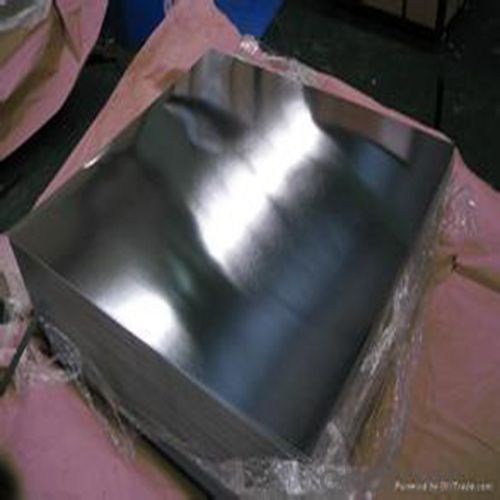
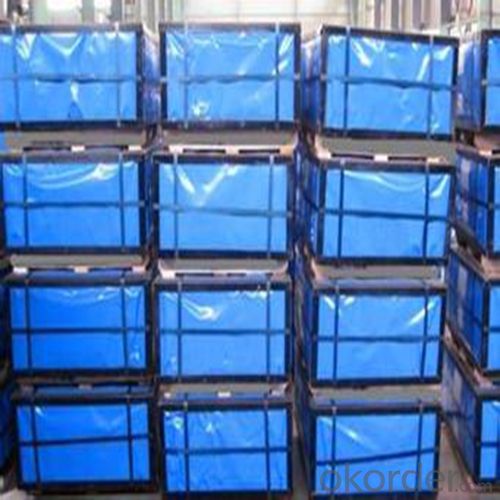
4.Electrolytic Tinplate Sheets for Useage of Paint Package Specification
Specification of :
Standard: ISO 11949 -1995, GB/T2520-2000,JIS G3303,ASTM A623, BS EN 10202
Material: MR,SPCC
Thickness:0.15mm - 0.50mm
Width: 600mm -1150mm
Temper: T1-T5
Annealing: BA & CA
Coil Inner Diameter: 508mm
Weight: 6-10 tons/coil 1~1.7 tons/sheets bundle
Passivation:311
Oil: DOS
Surface: Finish,bright,stone,matte,silver
5.FAQ of Electrolytic Tinplate Sheets for Useage of Paint Package
- What is tinning and how does it work?
Tinning is the process of thinly coating sheets of wrought iron or steel with tin, and the resulting product is known as tinplate. It is most often used to prevent rust.
- Do you only have prime quality tinplate?
We can supply both prime and second quality tinplate.
- Q: How does tinplate perform in terms of gas barrier properties?
- Tinplate exhibits excellent gas barrier properties, making it an effective material for packaging perishable goods and preventing the ingress of oxygen, moisture, and other gases.
- Q: How does tinplate affect the taste and quality of food?
- Tinplate has a minimal effect on the taste and quality of food. It acts as a protective barrier, preventing the food from coming into direct contact with the metal. This ensures that the taste and quality of the food remain unaffected by any potential reactions with the tinplate.
- Q: Can tinplate packaging be used for promotional items?
- Yes, tinplate packaging can definitely be used for promotional items. Tinplate is a versatile and durable material that can be customized with various designs and branding. It offers a unique and premium look, making it an attractive choice for promotional items such as gift sets, collectibles, or limited edition products. Additionally, tinplate packaging provides excellent protection for the items inside, ensuring their quality and longevity.
- Q: What are the main challenges in tinplate welding and soldering?
- Some of the main challenges in tinplate welding and soldering include ensuring proper surface preparation to achieve good adhesion, dealing with the thin gauge of tinplate which can make it more prone to warping or burning, and finding suitable fluxes and solder alloys that can effectively bond with tinplate due to its unique properties. Additionally, the presence of tin oxide on the surface of tinplate can hinder the formation of strong welds or solder joints, requiring special techniques or treatments to address this issue.
- Q: What are the main factors influencing the consumer preferences for tinplate packaging?
- The main factors influencing consumer preferences for tinplate packaging include its recyclability and sustainability, durability and protective properties, aesthetic appeal and branding opportunities, as well as its ability to preserve product quality and freshness.
- Q: How does tinplate contribute to the overall aesthetics of packaging?
- Tinplate contributes to the overall aesthetics of packaging through its unique and eye-catching appearance. Its shiny and smooth surface, along with its ability to be printed with vibrant and intricate designs, adds a touch of elegance and sophistication to various products. Additionally, tinplate's durability and versatility allow for the creation of intricate shapes and designs, enhancing the overall visual appeal of packaging.
- Q: What are the different types of tinplate surface treatments?
- There are several types of tinplate surface treatments, including electrolytic tinplate (ETP), tin-free steel (TFS), blackplate, and lacquered tinplate.
- Q: Can tinplate be used for packaging chemicals?
- Yes, tinplate can be used for packaging chemicals. It is a commonly used material for packaging due to its durability, resistance to corrosion, and ability to protect against light and oxygen. Tinplate is also known for its ability to withstand various temperatures and pressures, making it suitable for storing and transporting a wide range of chemicals safely.
- Q: What are the main applications of tinplate in the energy industry?
- Tinplate is commonly used in the energy industry for various applications such as the production of battery casings, electrical components, and packaging for energy storage devices. Its corrosion resistance, strength, and ability to withstand extreme temperatures make it a preferred material for these purposes. Additionally, tinplate's non-reactive nature ensures the integrity of energy storage systems, making it an ideal choice for the energy industry.
- Q: What are the main applications of tinplate in the household goods industry?
- Tinplate is commonly used in the household goods industry for various applications such as food and beverage packaging, storage containers, kitchenware, and decorative items. Its corrosion resistance, durability, and ability to seal in freshness make it an ideal material for cans, jars, and tins. Additionally, its versatility allows for the creation of aesthetically pleasing and functional household items like trays, buckets, and utensils.
Send your message to us
Electrolytic Tinplate Sheets for Useage of Paint Package
- Loading Port:
- Tianjin
- Payment Terms:
- TT OR LC
- Min Order Qty:
- 50 m.t.
- Supply Capability:
- 30000 m.t./month
OKorder Service Pledge
OKorder Financial Service
Similar products
Hot products
Hot Searches
Related keywords
